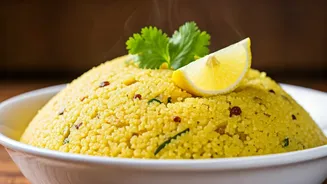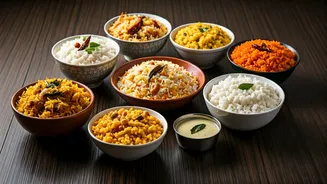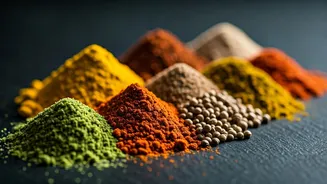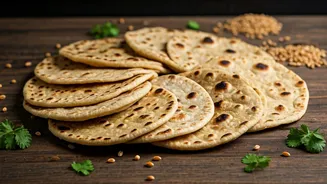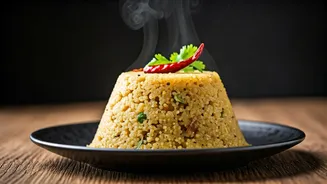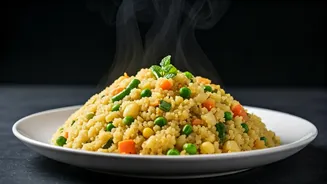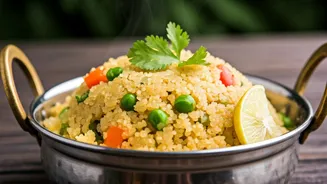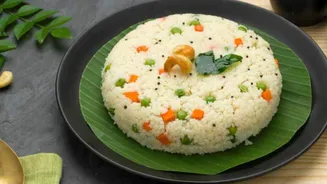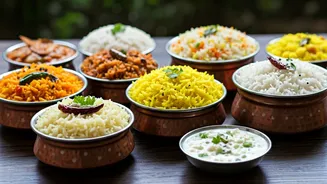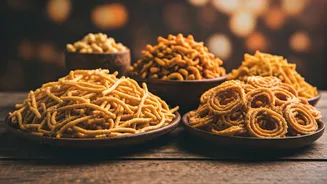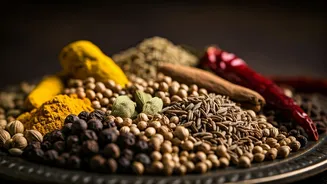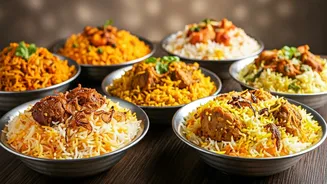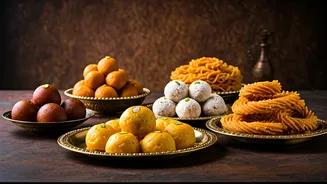Upma's Humble Beginnings
Upma, a humble dish born in the heart of South India, has gradually transcended regional boundaries to become a beloved breakfast staple throughout India.
Its simplicity, requiring just a few basic ingredients like semolina, vegetables, and spices, makes it incredibly accessible and easy to prepare. This has played a significant role in its widespread popularity, with variations found across different states, each adding a unique touch to the original recipe. From the classic version to more elaborate versions with the addition of nuts, dried fruits, or different types of vegetables, upma has consistently adapted to suit various tastes and preferences. The dish's flexibility and adaptability have played an important role in its widespread popularity across the country.
Global Recognition Unveiled
Recently, upma's popularity received a major boost with its inclusion in the '50 Best Porridges in the World' list. This is a significant achievement, highlighting the dish's culinary excellence and global appeal. The acknowledgment on such a prestigious platform not only validates the taste and texture of upma but also exposes it to a wider audience, including international food enthusiasts, chefs, and culinary critics. This exposure is expected to boost upma's presence on global menus and further increase its appeal. This recognition underscores the richness of Indian cuisine, introducing a beloved breakfast to an international audience. The distinction highlights the cultural significance and widespread enjoyment of upma.
What Makes Upma Special?
The secret to upma's charm lies in its simplicity and versatility. The toasted semolina provides a nutty base, complemented by the vegetables and spices that add layers of flavor. The dish's texture is perfectly balanced, offering a satisfying mouthfeel. Every bite provides a harmonious blend of textures, from the soft semolina to the crisp vegetables. This, combined with the aroma of tempering with mustard seeds, curry leaves, and other spices, creates a sensory experience that is both comforting and exciting. Variations in ingredients and spices create a multitude of flavor profiles, so the preparation of upma can range from basic and quick to elaborate and customized.
Upma's Cultural Significance
Beyond its taste, upma holds a special place in Indian culture, frequently served as a breakfast dish. It is a symbol of warmth and hospitality, often prepared to welcome guests and mark special occasions. The dish's quick and easy preparation makes it a practical option for busy mornings, and it is a reliable choice for any household. Upma's presence on the table represents a shared experience, binding families and communities together. This culinary contribution makes it an iconic dish that celebrates India's rich culinary history. From South Indian homes to North Indian restaurants, upma is a reminder of comfort, family, and a flavorful cultural tradition.
The Future of Upma
Upma's recent international recognition is just the beginning. The exposure it receives will open doors for more chefs and food businesses worldwide to experiment with this dish. This could mean innovative adaptations, fusion dishes, and creative presentations. As the world becomes more aware of Indian cuisine, upma has the potential to become a global favorite, alongside other popular Indian dishes. It is a testament to the dish's timeless appeal and its ability to captivate audiences worldwide. With its simplicity, versatility, and rich cultural ties, upma is set for a bright future on the global culinary stage.
